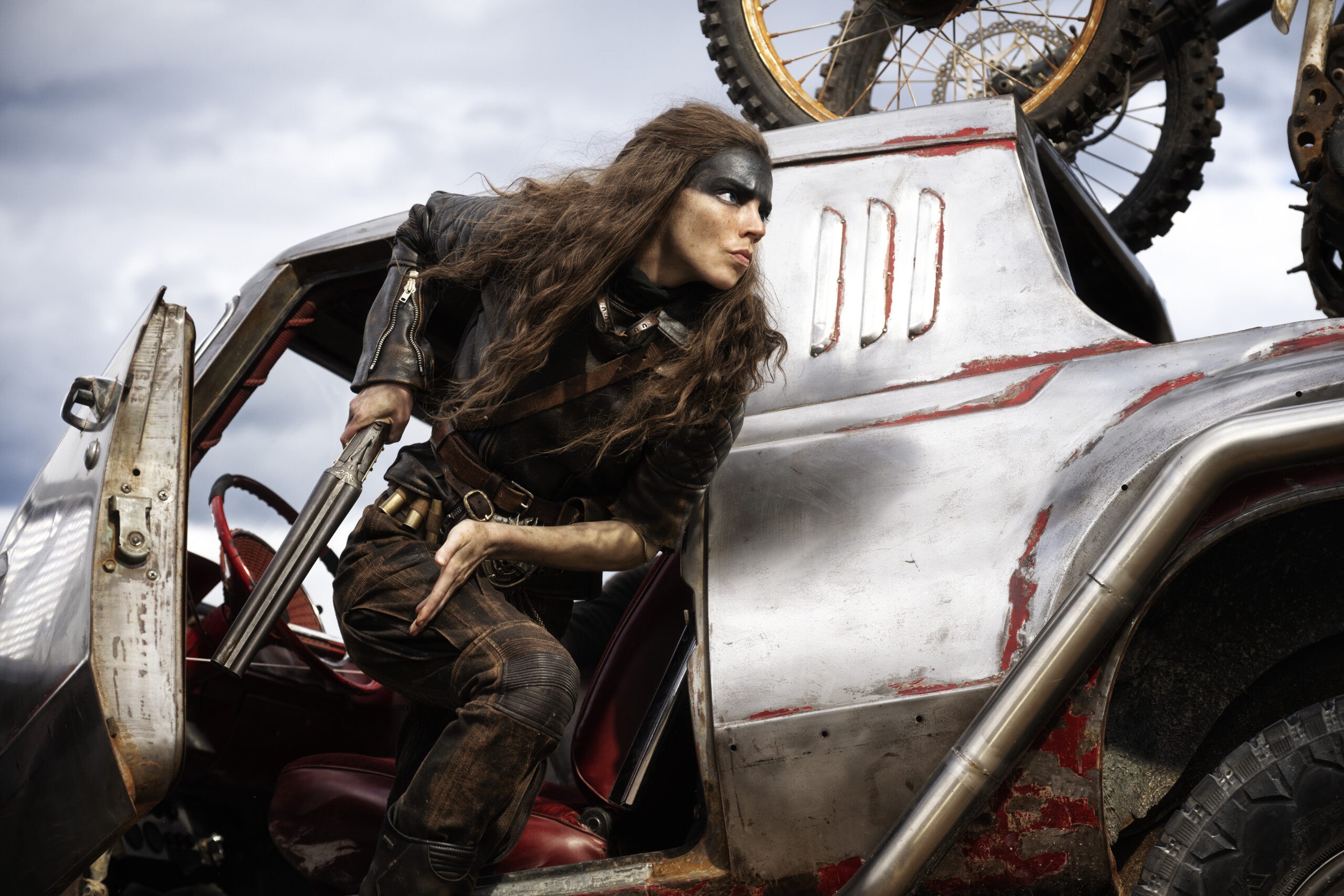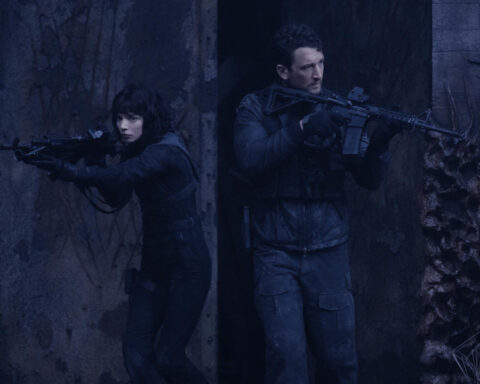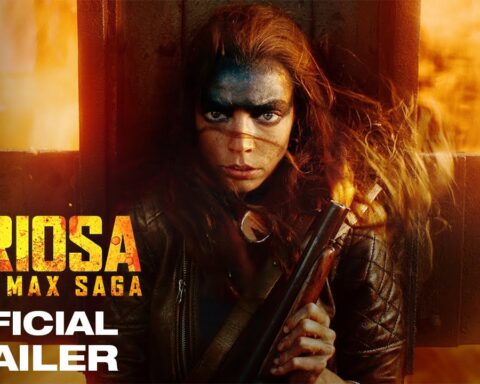When the follow-up to a commercially and financially successful film is announced – whether a sequel, prequel, or spin-off – the usual question arises: why? Why not let the originally planned movie stand alone in peace? Is there a need or even enough story to create another film in the same fictional world? What will this new installment have to offer? The questions are numerous, but in the end, they will disappear if Furiosa: A Mad Max Saga meets the tremendous anticipation of the general public and critics worldwide.
George Miller created the Mad Max franchise in the ’80s, but despite its tremendous success at the time, it was only with Fury Road – with the help of his co-writer, Nico Lathouris – that the saga reached a whole other level of appreciation. Considered by the vast majority of viewers as a true masterpiece of the action genre, the character brilliantly portrayed by Charlize Theron is often mentioned as one of the most powerful, brave female characters of the XXI century, making it more than natural that Furiosa emerges as the origin story many wanted to see.
In this prequel, Furiosa – Alyla Browne (Sting) plays her as a child, while Anya Taylor-Joy (The Witch) portrays the adult version – is kidnapped from her mythical, abundant birthplace: the Green Place of Many Mothers. She ends up in the hands of a warlord named Dementus (Chris Hemsworth), leader of a biker horde who, while wandering through the Wasteland, encounters the Citadel ruled by Immortan Joe (Lachy Hulme). As the two tyrants battle for dominance, Furiosa tries to survive an endless battle to return home.
Personally, I was so impressed with Fury Road upon its release that I never doubted it deserved the coveted label of ‘masterpiece’. However, as the years passed and subsequent home viewings occurred, the lack of character depth and even the post-apocalyptic themes, along with a world-building more driven by exposition than visual demonstration, started to become more serious issues. Focusing exclusively on the action? Masterpiece, absolutely. But looking at the complete painting, some strokes are missing to bring me to the same level of adoration as many other viewers, despite considering it one of the best action blockbusters of its respective decade.
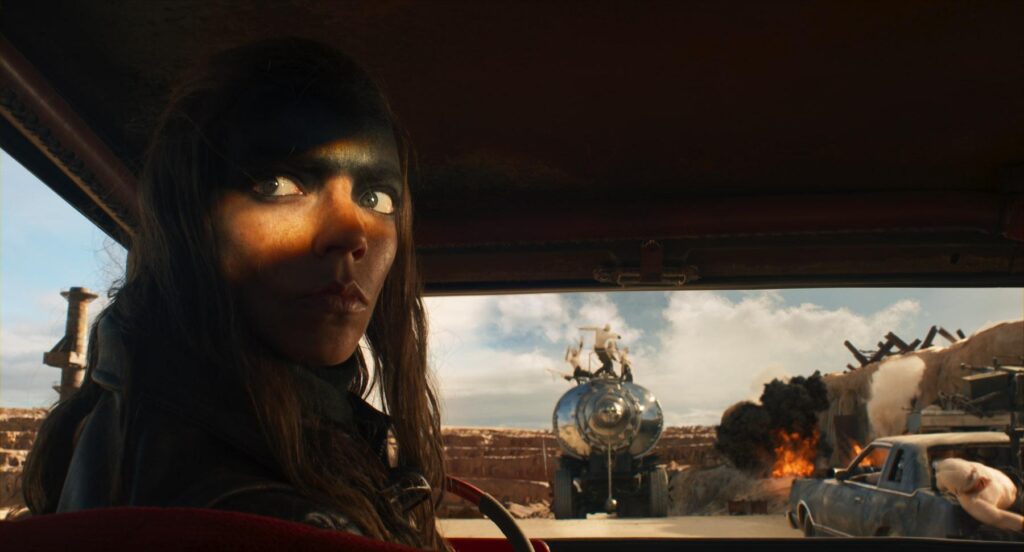
That said, my personal expectations were high going into Furiosa, and after 24 hours of much mental processing, I concluded that the enjoyment of the two interconnected movies depends on the perspective chosen to analyze them. Looking at Furiosa as a prequel to Fury Road, the problems in both films become more evident, as each has what the other lacks. Viewing Fury Road as a sequel to Furiosa, most of these issues resolve themselves automatically. How? Let me explain.
Furiosa is at its best when it decides to focus on and deeply explore its titular protagonist. Miller divides the prequel into five chapters marked by the usual black-and-white title cards, initially focusing on a very capable, independent young Furiosa. Fearless of anything or anyone, the main character follows a typical revenge arc, but unlike Fury Road, where her redemption journey is based on the few words she speaks about her past and final goal, the vital ingredients to justify such extreme commitment are presented and developed over an entire hour.
During these early chapters, Furiosa also contributes to a more palpable world-building by traversing locations only mentioned in Fury Road, as if the viewers had already visited them in the past. From Gas Town to Bullet Town, not forgetting the green paradise where the protagonist comes from, Miller visually completes a world he presented exclusively through words in 2015. The epic scale illustrated by the beautiful cinematography of Simon Duggan (Hacksaw Ridge) is now complemented by the narrative dimension that John Seale – DP of Fury Road – didn’t have.
Thus, watching Furiosa first and Fury Road subsequently, the issues related to the lack of developed characters and world-building are significantly mitigated, as there’s a 148-minute movie that not only deepens the dramatic central character of Fury Road – Max may be the protagonist, but most of the main themes pass through Furiosa – but also visually presents the world only described in the other film. However, not everything is fixed…
Furiosa doesn’t justify its extensive duration and suffers greatly from the fact that Fury Road is constantly mentioned as one of the most spectacular action movies ever, as everyone will expect more of the same when Furiosa shouldn’t even be allocated to the action genre. In fact, the respective runtimes should be swapped: the prequel would benefit from a shorter duration, while the 2015 flick could go even further with its action. Fury Road is a pure survival story, so the numerous frenetic, consecutive action sequences without room to catch your breath naturally appear throughout the film. In Furiosa, despite the lesser amount of action and a more measured pace, the need to insert a more energetic moment is more noticeable and, therefore, more forced, as the vast majority of the audience didn’t enter the theater expecting a coming-of-age story or a slow, uneventful drama.
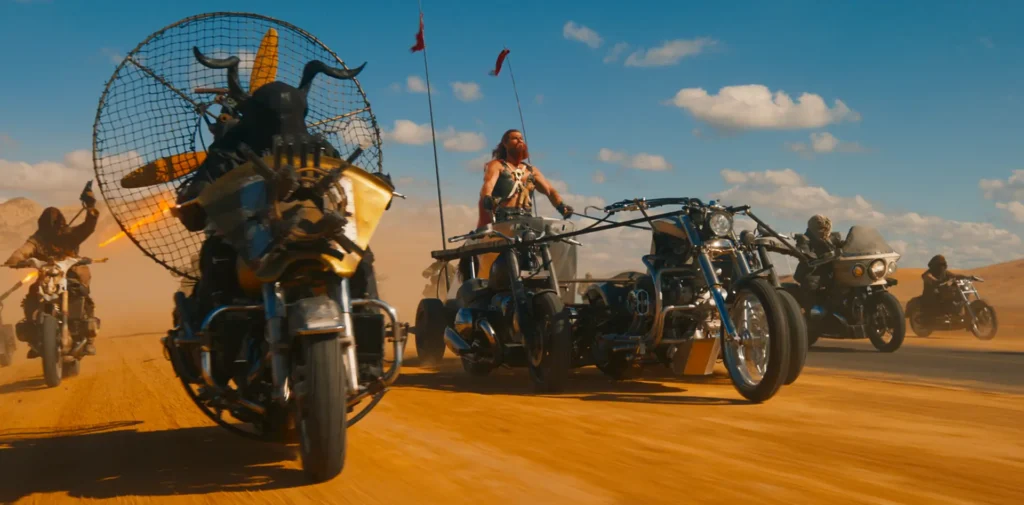
It’s the typical movie of two halves. Miller spends too much time with the young Furiosa, not only narratively – there comes a point where nothing more is being added to this version of the protagonist – but also action-wise, with unnecessary sequences that are ultimately irrelevant to the overall plot. The set pieces remain impressive, containing absolutely phenomenal stunts with cars and trucks, but I admit not feeling the same exciting aura as Fury Road – the fact that everything looks very similar removes that thrilling sense of novelty.
The narrative itself also ends up being very predictable due to the simple fact that we know how it ends, which always removes the surprise factor, often underestimated but with a significant impact. On the other hand, it’s a thematically richer screenplay with a more convincing revenge arc than the redemption angle of Fury Road. Tom Holkenborg returns as the composer and again complements the action well, in a consistent work that conveys the necessary adrenaline levels to enjoy the insane sequences even more.
And so we get to the performances. Taylor-Joy had big shoes to fill, as Theron gave one of the most memorable performances of the last twenty years. Although she doesn’t reach that supreme level, the young actress gives her all to Furiosa, making me, above all, believe that this is the badass woman who steals the show in Fury Road. With very few lines of dialogue, I felt equally invested in the protagonist’s arc, largely due to Taylor-Joy’s impactful charisma, but also due to her counterpart, Tom Burke (Mank), who excellently portrays Praetorian Jack, a commander of the Citadel. Browne also deserves numerous praises for an outstanding display at just 14/15 years of age.
But then Hemsworth (Thor) emerges in one of the best roles of his career. For those who watched Bad Times at the El Royale, this transformation of the actor, best known for being one of Marvel’s most beloved heroes, won’t be surprising. I’ve always considered Hemsworth one of Hollywood’s most underrated actors, and in Furiosa, he proves his innate talent for playing such extravagant characters. Despite the facial makeup needing a few minutes to adjust – it makes the actor so different that it genuinely becomes distracting – his portrayal of Dementus lives up to the character’s name.
I end this review as I started: the enjoyment of Furiosa and, consequently, Fury Road will depend on the perspective chosen by the viewers to analyze the respective movies. Personally, I believe watching Furiosa first makes Fury Road a more complete film, deserving of the label that many like to attribute to it. Conversely, the problems simply become more evident. Either way, these are two movies filled with epic desert entertainment that I can’t imagine not satisfying the vast majority of those who experience them on the big screen.
Furiosa: A Mad Max Saga deepens its titular protagonist and the respective post-apocalyptic world, offering a captivating origin story that enriches Fury Road, but its excessive runtime, predictability, and time spent addressing the other installment’s flaws hinder its enjoyment. The action set pieces lack the same novelty factor and frenetic pace, but the stunts remain impressive. The performances of Anya Taylor-Joy and Alyla Browne as Furiosa deserve praise, as does Chris Hemsworth’s insane portrayal of Dementus. Depending on the chosen viewing order, the perspective on both films changes drastically, but in the end, they remain essential recommendations to every movie lover out there.
